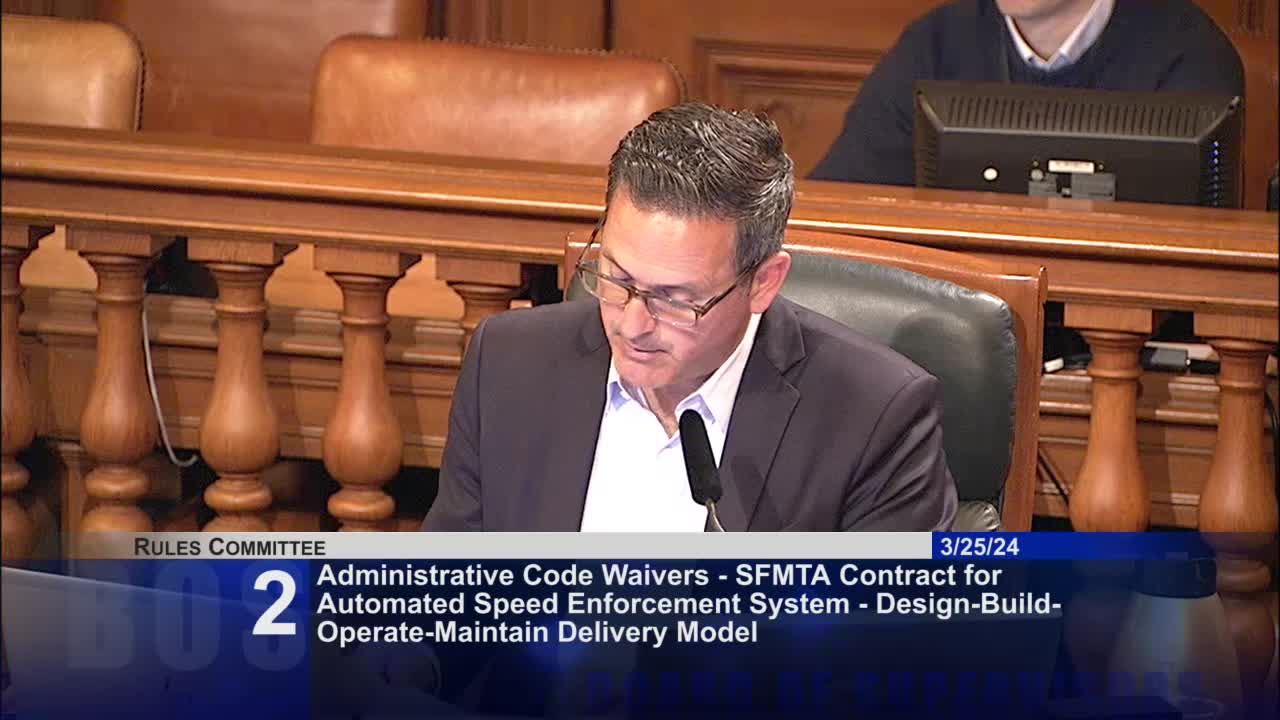San Francisco selects 33 locations for automated speed enforcement cameras
March 25, 2024 | San Francisco County, California

This article was created by AI summarizing key points discussed. AI makes mistakes, so for full details and context, please refer to the video of the full meeting. Please report any errors so we can fix them. Report an error »

In a recent government meeting, San Francisco officials discussed the implementation of automated speed enforcement cameras aimed at enhancing road safety across the city. The meeting highlighted the importance of community engagement and data-driven decision-making in selecting camera locations.
The discussion began with a call for transparency regarding the criteria used to identify the 33 locations for the cameras. Officials explained that the selection process was guided by legislation that specified installation on safety corridors, school zones, and streets with documented speeding issues. They utilized the High Injury Network, which comprises 12% of city streets responsible for 68% of serious injuries and fatalities, to prioritize areas most in need of intervention.
Data collection played a crucial role in refining the list of potential locations. Over the past few months, officials deployed pneumatic tubes to gather detailed speed data from 80 identified sites. This analysis revealed patterns of egregious speeding, allowing the team to narrow down the list to the final 33 locations, which include areas near schools, parks, and senior centers—places where vulnerable populations are at higher risk.
Community outreach was emphasized as a vital component of the project. Officials acknowledged the need for effective communication to educate residents about the purpose and benefits of the speed enforcement initiative. Plans for community meetings were discussed, aiming to ensure that residents are informed and engaged throughout the process.
The meeting concluded with a commitment to present a detailed map of the High Injury Network and the locations of past collisions at the next Board of Supervisors meeting. This visual representation is expected to enhance public understanding of the initiative's scope and the rationale behind the selected locations.
As San Francisco moves forward with this safety initiative, the focus remains on reducing traffic-related injuries and fatalities, while fostering community involvement in the decision-making process. The anticipated next steps include further data presentations and continued dialogue with residents to ensure the program's success.
The discussion began with a call for transparency regarding the criteria used to identify the 33 locations for the cameras. Officials explained that the selection process was guided by legislation that specified installation on safety corridors, school zones, and streets with documented speeding issues. They utilized the High Injury Network, which comprises 12% of city streets responsible for 68% of serious injuries and fatalities, to prioritize areas most in need of intervention.
Data collection played a crucial role in refining the list of potential locations. Over the past few months, officials deployed pneumatic tubes to gather detailed speed data from 80 identified sites. This analysis revealed patterns of egregious speeding, allowing the team to narrow down the list to the final 33 locations, which include areas near schools, parks, and senior centers—places where vulnerable populations are at higher risk.
Community outreach was emphasized as a vital component of the project. Officials acknowledged the need for effective communication to educate residents about the purpose and benefits of the speed enforcement initiative. Plans for community meetings were discussed, aiming to ensure that residents are informed and engaged throughout the process.
The meeting concluded with a commitment to present a detailed map of the High Injury Network and the locations of past collisions at the next Board of Supervisors meeting. This visual representation is expected to enhance public understanding of the initiative's scope and the rationale behind the selected locations.
As San Francisco moves forward with this safety initiative, the focus remains on reducing traffic-related injuries and fatalities, while fostering community involvement in the decision-making process. The anticipated next steps include further data presentations and continued dialogue with residents to ensure the program's success.
View full meeting
This article is based on a recent meeting—watch the full video and explore the complete transcript for deeper insights into the discussion.
View full meeting
